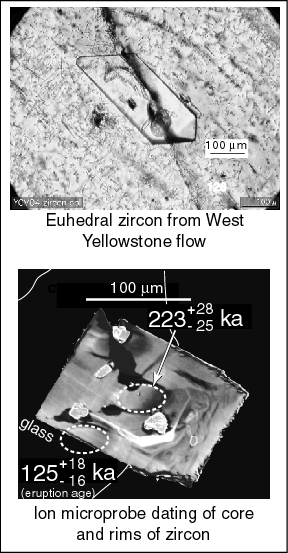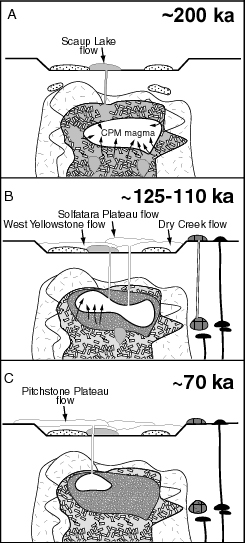Storage and differentiation of post-caldera magma at
Yellowstone caldera
For
a portion of my dissertation, I have determined the duration of magma
storage
and the timing of differentiation of rhyolitic magmas erupted from
Yellowstone
caldera by combining zircon ages, trace element and radiogenic isotope
compositions (Sr and Nd) of their host melts, and the established
volcanic
history. This combination reveals that the youngest
post-caldera rhyolites comprising the Central Plateau Member of the
Plateau
Rhyolite (160-70 ka) were erupted from a single magma reservoir that
evolved
for ca. 100 thousand years and was punctuated by distinct episodes
differentiation
by fractional crystallization as the magma chamber became mushy.
Newly differentiated rhyolite was stored for up to tens of
thousands of years before eruption. The zircons fingerprint the
young Yellowstone lavas as new rhyolitic magma, and demonstrate that
the
the magma did not tap a long-standing magma chamber left over from
the caldera-forming eruption. In addition, they reveal that the
magmas are not recycled from old intrusions, contrary to that
postulated by other workers for Yellowstone
and other calderas.
See:
Vazquez JA, Reid MR (2002) Time scales of magma storage and
differentiation
of voluminous high-silica rhyolites at Yellowstone caldera,
Wyoming.
Contributions and Mineralogy and Petrology, v. 144, p. 274-285





